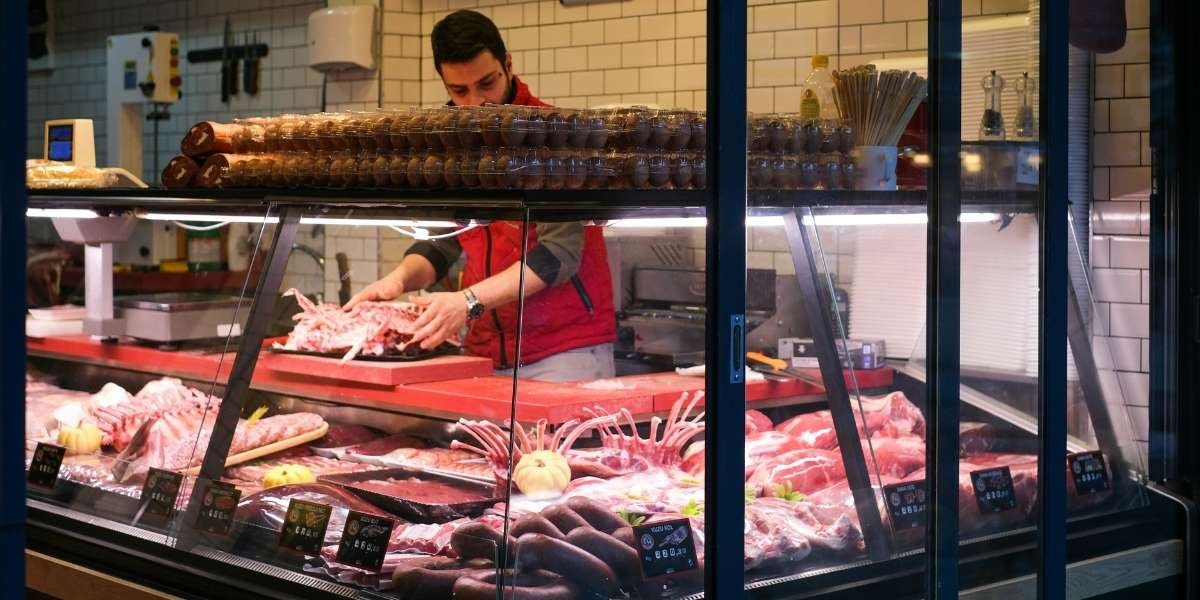Beef prices have surged over recent months, causing concern for consumers, restaurants, and food businesses alike. A major contributor to these rising costs is ongoing supply chain disruptions. The beef industry is complex, with various factors, ranging from climate change to labor shortages, playing key roles in pushing up prices. Understanding how supply chain issues are impacting beef costs helps to provide context for the broader food pricing challenges faced today.
How Do Supply Chain Problems Affect Beef Prices?
The link between supply chain issues and beef prices is not always immediately obvious, but the effects are profound. Beef production involves a lengthy, multi-stage process, from raising cattle on farms to slaughtering, processing, and distributing the final product. At each step in this supply chain, disruptions can lead to delays, higher costs, and ultimately, higher prices for consumers.
A major supply chain problem begins with cattle supply. When fewer cattle are available, it directly impacts the amount of beef that can be produced. Shrinking herds are the result of several factors, including drought conditions and high feed prices, which are tied to broader agricultural trends. When it becomes expensive or difficult to raise cattle, fewer are brought to market. As a result, the overall supply of beef decreases, leading to higher prices as demand remains strong.

Photo Credit: Unsplash.com
The beef supply chain also depends heavily on labor. Shortages of workers in slaughterhouses, meatpacking plants, and distribution centers have been significant in recent years. The COVID-19 pandemic exacerbated this problem, as many workers became ill or were unable to work. Even as the pandemic has subsided, the workforce in meat processing plants has not fully recovered. With fewer workers available to process the same volume of cattle, production slows, further driving up costs.
The impact of labor shortages isn’t limited to processing plants. Transportation bottlenecks also affect the ability to get beef from processing facilities to grocery stores and restaurants. Trucking shortages, port delays, and rising fuel costs all add to the logistical hurdles, which contribute to higher prices for beef products.
Why Are Beef Herds Shrinking?
The U.S. cattle population has steadily decreased over the past few years. As of early 2025, the number of cattle is at its lowest in more than 70 years. Several key factors contribute to this decline, including extreme weather events and rising feed costs.
Drought conditions across major cattle-producing regions have led to reduced forage and water availability, which in turn forces ranchers to sell off cattle at a younger age. This means fewer cattle reach full size, reducing the overall beef supply. Additionally, high feed prices, due to a combination of climate events and the cost of growing crops like corn and soy, make it more expensive to raise cattle. As a result, ranchers are less likely to keep cattle long enough to reach market size.
Environmental pressures and trade policies also play a role in shrinking cattle numbers. For instance, U.S. farmers and ranchers face international competition, especially from countries like Brazil, which is a major exporter of beef. When beef imports from other nations increase, it can push local beef prices higher, further complicating the supply chain.
How Are Processing Delays Impacting Prices?
Processing delays are a significant factor contributing to rising beef prices. Once cattle are raised, they must be slaughtered and processed into cuts of meat before being sold at retail. This process happens in large processing plants, and delays at any point in this system can cause substantial disruptions to the entire supply chain.
Labor shortages, which have affected nearly every industry, are particularly challenging in meatpacking plants. These plants require skilled workers to handle cattle, process the meat, and package it for distribution. However, as mentioned earlier, the workforce has been decimated in many facilities due to illness, labor strikes, and other challenges. With fewer workers, the plants operate at reduced capacity, processing fewer cattle at a time, which leads to lower supply and higher costs for beef products.
In addition to labor issues, cybersecurity threats have also played a role in processing delays. High-profile cyberattacks, such as those on major meatpacking companies, have disrupted operations. These attacks target systems that manage everything from inventory to logistics, slowing down the entire process and causing significant financial losses. The ripple effect of these delays often ends up pushing up prices for consumers.
What Are the Long-Term Trends?
Several long-term trends are likely to continue impacting beef prices. These trends not only illustrate the current challenges but also highlight potential ongoing issues that could keep beef prices high for the foreseeable future.
Climate Change
One of the most pressing concerns is the impact of climate change. Rising temperatures and erratic weather patterns continue to strain agricultural systems, including cattle ranching. Increased droughts, floods, and heatwaves reduce the availability of resources necessary to raise cattle. As a result, fewer cattle are available for processing, leading to higher prices.
Technological Innovations and Efficiency
On a positive note, there are efforts within the industry to improve efficiency through technology. Innovations such as automation in processing plants and advancements in cattle breeding may help alleviate some supply chain constraints. However, widespread implementation of these technologies will take time and investment, and it’s unclear how quickly these innovations can reduce prices in a meaningful way.
Consumer Demand for Beef
Despite rising prices, beef remains a popular food choice in many countries, especially in the U.S. Demand for beef continues to be high, especially during grilling seasons or holidays, when sales see a noticeable spike. The steady consumer appetite for beef puts pressure on producers to meet demand despite the challenges in the supply chain.
How Are Trade and Tariffs Influencing Beef Costs?

Photo Credit: Unsplash.com
Another critical aspect of the beef supply chain is international trade. Tariffs and trade agreements play a significant role in determining how much beef is available in the domestic market. Countries like Brazil and Australia are major beef exporters to the U.S., but trade policies and tariffs can directly impact the price of imported beef.
In some cases, countries like Brazil face restrictions on beef exports due to issues like disease outbreaks or food safety concerns. When these countries can’t export as much beef, domestic supplies shrink, and prices increase. Similarly, U.S. tariffs on beef imports can also increase the cost of imported meat, driving up prices in local markets.
Supply chain issues are a key driver of the rising cost of beef, with factors such as shrinking cattle herds, labor shortages, and logistical delays all playing significant roles. As the beef supply chain continues to face challenges, consumers can expect higher prices in the near term. However, ongoing efforts to address some of these issues, such as improving technology and expanding beef imports, may eventually help stabilize prices. Understanding the complexities of the beef supply chain can help consumers make more informed decisions about their food purchases, especially as the industry works to recover from these ongoing disruptions.







